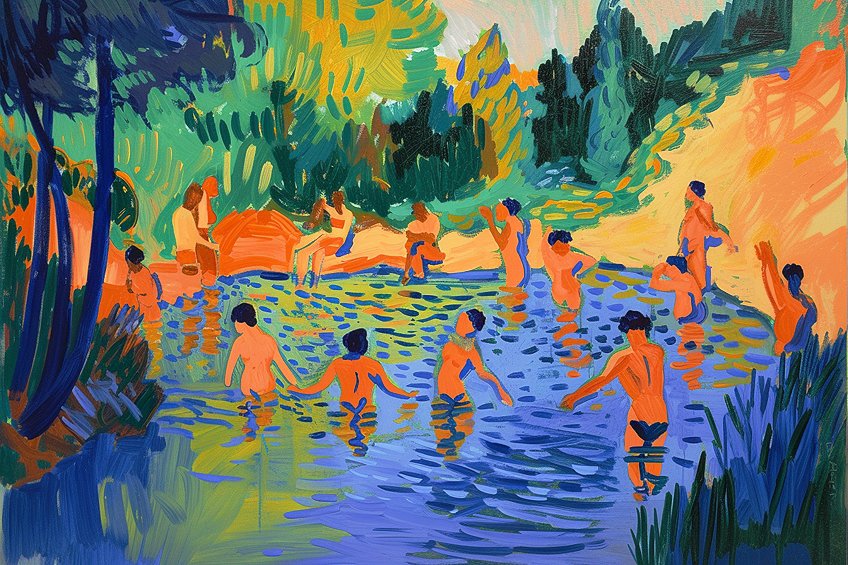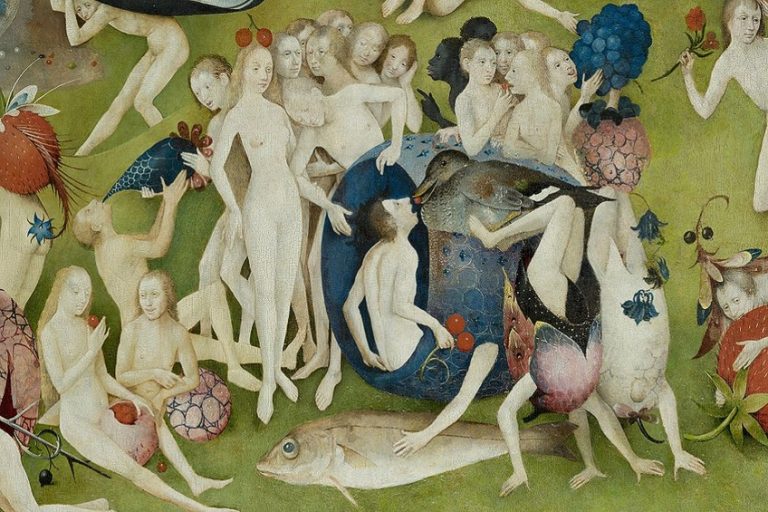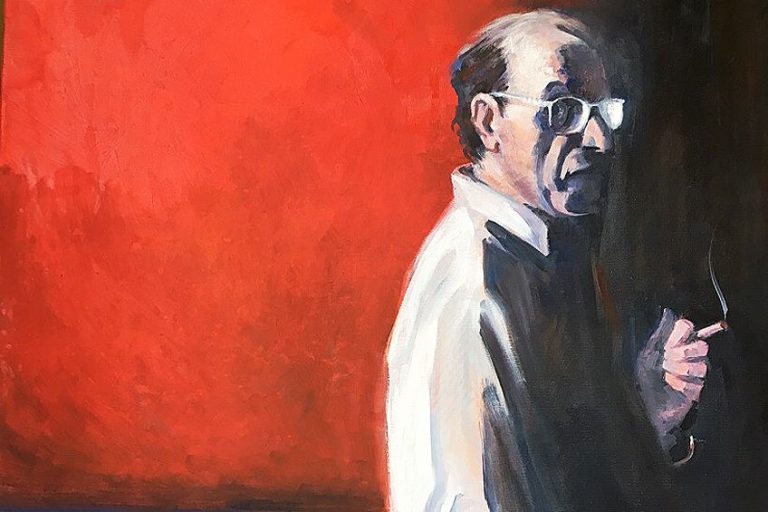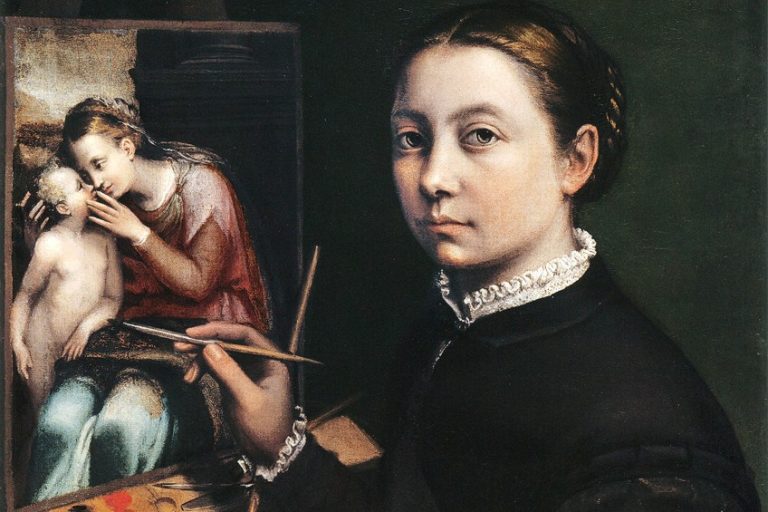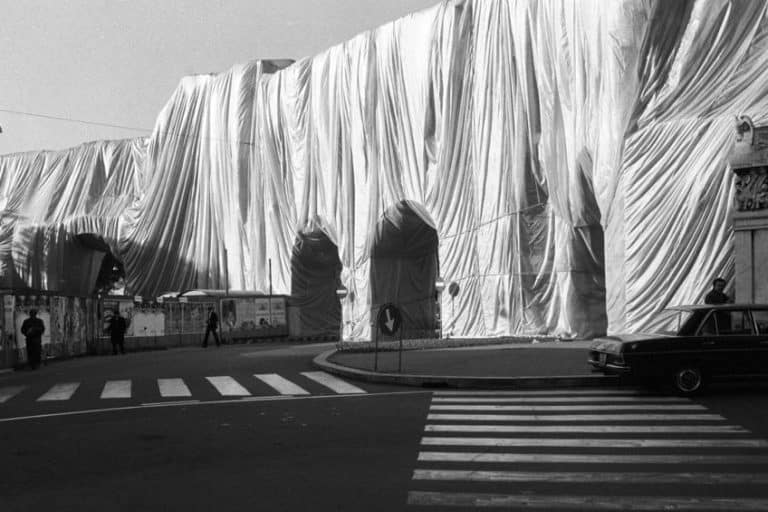André Derain – Pioneer of Fauvism and Modern Art
As a pioneer of the Fauvist movement in the early 20th century, the enigmatic palette of André Derain remains an informative point of reference for many who love to explore the modern developments of 20th-century painting and color theory. Through energetic colors infused in landscapes, the work and life of Derain is one that you will find intriguing to learn about. We invite you to read further as we traverse through a complete biography of the French painter, as well as a few famous André Derain paintings that have left a few gems of insight into his emotive use of color and contribution to Fauvism.
Pioneer of French Fauvism: The Life and Art of André Derain
| Artist Name | André Derain |
| Date of Birth | 10 June 1880 |
| Date of Death | 8 September 1954 |
| Nationality | French |
| Associated Movements, Themes, and Styles | Fauvism, Classicism, Modern art, landscape art, and portraiture |
| Mediums | Painting, illustration, and sculpture |
Who was André Derain, and what works was he best known for? André Derain was widely recognized as a major French painter and sculptor of the Fauvist movement, who also co-founded the movement Fauvism, alongside the Modernist Henri Matisse. Derain’s work was identified as les Fauves and dubbed a part of the “wild beasts” for his unconventional use of color in his city portraits and landscape paintings.
Having briefly served in the military during World War I, Derain went on to become a leader in Classicism in the 1920s and landed himself the Carnegie Prize in 1928, which piloted his fame across the Western and European world.
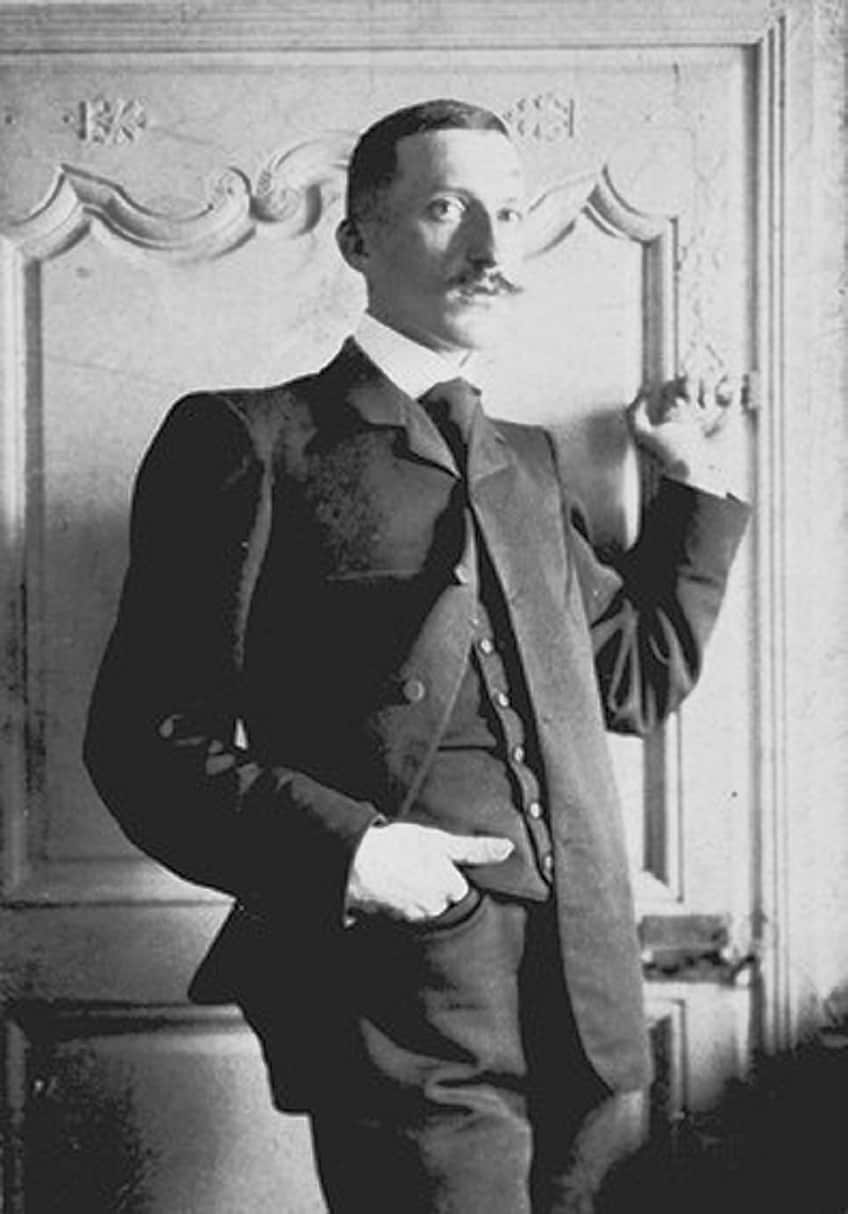
There are many recognizable André Derain paintings that can be seen in public collections in the Museum de Fundatie in the Netherlands and the Museum of Fine Arts in Ghent. Below, we will examine the life and art of Derain to unpack some of the key influences in his work, as well as the development of his style and life events that shaped his practice. One will also discover the demise of the Fauvist and the events that led up to his ostracization from French art circles.
Early Life and Education
André Derain was born in Chatou, Yvelines in Île-de-France in 1880 and was known to practice self-study before meeting Henri Matisse, who encouraged his pursuit of painting. Derain often traveled to the countryside with Father Jacomin, who was also a friend of Paul Cézanne to practice painting. Derain’s education was kickstarted at the Académie Camillo, where he studied towards a career in engineering and also attended painting classes under the guidance of Eugène Carrière. It was at these classes that Derain gained a close friendship with Matisse.
By 1900, Derain established a shared studio with Maurice de Vlaminck, and together the two started to paint landscapes and scenes from the area. Between 1901 and 1904, Derain had to enroll in his military service, which interrupted his art studies and painting practice. After his service, Matisse helped Derain to break free from engineering and pursue art by persuading his parents, which led to Derain enrolling at the Académie Julian.
Reviewing André Derain’s Painting Style
Derain’s painting style developed through his study and observation of the landscapes and cities around him, which eventually culminated in the collaborative establishment of the movement known as Fauvism alongside Henri Matisse. The duo collaborated in 1905 while working in Collioure. Later in the year, the two launched their paintings and style at the Salon d’Automne, which led to critics identifying their works with the style of “the wild beasts”, also known as les Fauves, which is where the movement earned its name from. In the following year, an art dealer named Ambroise Vollard sponsored Derain’s trip to London to create a new series of works centering the city as his subject, resulting in a 30-artwork series.
This series stood as a portrait of London, which was considered radically different from that of the works of other artists who painted images of the city’s best features.
Derain’s exploration of color in painting was marked by his use of bold colors and striking compositions, which culminated in a series of images of the Thames River and the Tower Bridge. One art critic by the name of T. G Rosenthal described Derain’s work as fresh with scenes that embody the Pointillist technique, as well as a separation of color known as Divisionism, which was effective in relaying the fragmentation of color in the water and its relationship with the sunlight. By around 1913, Derain’s work mirrored his interest in the works of Old Master painters, which influenced his use of color and reduction of form. This era was marked as his Gothic period, which ran between 1911 and 1914. While his painting slowed down drastically due to his military service in 1914, he managed to create illustrations for a publication by André Breton in 1916. Following the war, his style shifted to Classicism, where he led the way for traditional approaches.
Notable Influences
André Derain’s paintings were also influenced by the modernist work of Pablo Picasso while experimenting with stone sculpture. While spending time in Montmartre, Derain’s style had begun to adopt a more muted color palette, which reflected his interest in Cubism and influences from the work of Cézanne. It has also been speculated that Derain was perhaps influenced by African sculpture since he also created Primitivist-styled woodcuts for the 1909 publication L’enchanteur puissant by Guillaume Apollinaire. Derain was also associated with the German Expressionists in 1910 after exhibiting with the Neue Künstlervereinigung and the Der Blaue Reiter group in 1912.
Awards and Recognition
Derain’s first solo show was held at the Galerie Paul Guillaume in Paris in 1916, which was to become the first of many other exhibitions around the world. André Derain’s success was also seen in his design of the La Boutique fantasque ballet for the famous art critic and ballet impresario Sergei Pavlovich Diaghilev, which led to Derain’s successful career in design in 1919. The 1920s was the prime of Derain’s career, which saw him bag the Carnegie Prize in 1928 for his painting Still-life with Dead Game, which featured in a touring exhibition across London, New York, and Berlin among other major cities. Derain’s career later took a turn toward Nazi Germany as he was featured as the icon of French culture and accepted an invitation to attend the Nazi exhibition in Germany for Arno Breker, a Nazi-endorsed sculptor and architect.
After France’s liberation, Derain was labeled a collaborator with many of his previous fans breaking ties with the artist.
What attracted the Germans’ interest in Derain’s work was his pursuit of Classicism styles that became symbols of high French culture. Derain himself continued to deny his involvement with the Nazis, stating that his art “stood above politics”. In light of the controversy, Derain continued to work in Chambourcy, where he lived with his wife and adopted son. His marriage ended in a separation after the birth of an illegitimate child, which led to many financial disputes. After the artist’s death, his paintings of London formed part of a major show in 2005 at the Courtauld Institute and ran until 2006. Derain’s work has also been exhibited at the Museum of Modern Art in New York, the Royal Academy of Arts in London, and the Statens Museum for Kunst in Copenhagen.
André Derain’s Death
Derain’s cause of death was an accident where he was hit by a moving vehicle in 1954. A year before the accident, Derain also contracted an eye infection, which continued to plague him until his death. He died in Garches, Hauts-de-Seine in Île-de-France. Since his death, Derain received much praise from critics and a few contemporaries who looked up to his Fauvist contributions. He was most notably praised for the fusion of African sculptural visual languages and Cubism, which was rarely seen.
The Art of André Derain
While Derain’s works may have proved influential in his Fauvist period, his association with Nazi Germany remains a point of interest and a significant area from which one can learn more about how artists who were endorsed by the Nazi regime became pawns for propaganda, leading to their ultimate downfall. Below, we will dive into a few famous paintings by Derain to help you learn about early Fauvist principles.
Bords de Seine à Chatou (c. 1904 – 1906)
| Date | c. 1904 – 1906 |
| Medium | Oil on canvas |
| Dimensions (cm) | 73.7 x 123.8 |
| Where It Is Housed | Private collection |
Bords de Seine à Chatou has been presented at many prestigious museums around the globe, from the Tate Gallery to the Los Angeles County Museum of Art, and remains one of Derain’s best Fauvist masterpieces. The painting was created with a traditional Impressionist view of the Seine River, from which one can see a segment of the river from the landscape. The artwork was created at the peak of the Fauvism movement and represents the land of Derain’s birthplace while simultaneously serving as a marker of a seminal point in his career. The vivid color palette is also reminiscent of the influences of Paul Cézanne with elements of abstraction on each plane.
What makes the painting unique is its horizontality, which was unusual for the artist at the time.
The town, Chatou, was located northwest of Paris and was a popular destination for many Impressionists. Derain’s style also sees a shift in Bords de Seine à Chatou with the artist departing from the realistic representation of land and demonstrating his will to create a harmonious sense of “ideal” isolation. Part of the Fauvist mission was the search for modern-day Eden, which emerged as a response to the socio-political turmoil at the turn of the century. Fueling this context, Derain’s painting negated the need for technical precision and opted for an abstract mosaic with flat patches of bold color. Derain once claimed that “Fauvism was our ordeal by fire” and that color, was for him, a charge of dynamite that was expected to emit light.
Barques au port de Collioure (c. 1905)
| Date | c. 1905 |
| Medium | Oil on canvas |
| Dimensions (cm) | 60 x 73 |
| Where It Is Housed | Private collection |
The mosaic-like brushwork of Derain is best captured in Barques au port de Collioure, which exemplifies the vibrancy of the river through a series of carefully placed bright colors. Derain’s signature Fauve style was captured around 1905 when he accompanied Matisse to the coastal town of Collioure in July, where the two spent the next couple of months producing Fauvist paintings. Derain was struck by the liveliness of the town and praised the various hues of light that he witnessed over the river, as he described in a letter he penned to his contemporary Vlaminck. His fascination with the color and light of the Mediterranean river led him to refine his painting using strong contrasts of color to achieve a striking composition. Derain’s exploration of Collioure provided him with an abundance of inspiration, shaped by the activities of the local fishermen and the busy port.
The Houses of Parliament (1905 – 1906)
| Date | 1905 – 1906 |
| Medium | Oil on canvas |
| Dimensions (cm) | Unavailable |
| Where It Is Housed | Pierre Levy Collection, France |
Houses of Parliament by André Derain was created between 1905 and 1906 and offers a glimpse of Derain’s Neo-Impressionist depiction of the Thames River in London. The painting was commissioned by his art dealer Vollard to challenge Monet’s London landscapes. With a challenging task ahead of him, Derain found the subject a bit difficult but chose to explore color as an independent entity to produce this bold landscape without much room for realistic representation.
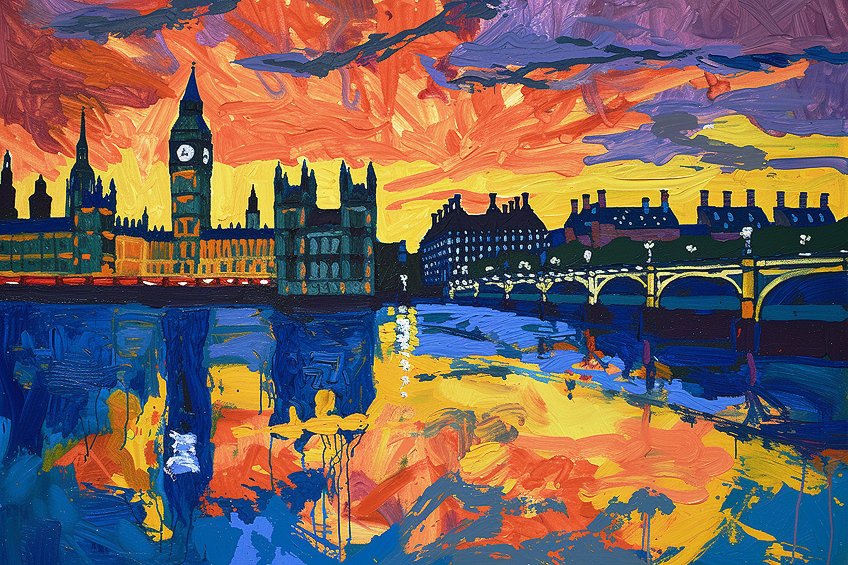
Houses of Parliament also demonstrates the artist’s experimentation with the technique of Divisionism by using thick and similarly-shaped paint strokes placed in a calculated manner. He also divided the canvas into upper and lower halves with the upper part dedicated to the skyline and the buildings with vertically oriented brushstrokes and the lower half depicting the water and a boat with horizontal strokes. Derain’s fauvist color palette is also an ode to the Impressionist approach of mosaic brushwork in the skyline, which is reflected in the water’s surface to establish a sense of harmony across the painting.
The Bathers (1908)
| Date | 1908 |
| Medium | Oil on canvas |
| Dimensions (cm) | Unavailable |
| Where It Is Housed | Private collection |
The Bathers is among the rare works of Derain that is recognized as one of the few figural paintings of Andre Derain since he intentionally destroyed most of his works of this genre. In the painting, Derain depicts the theme of female nudes in a natural setting, which was a subject previously explored by Modernists such as Cézanne and Picasso. The style of the work is reminiscent of the Primitivist and Constructivist styles of Derain’s contemporaries and its fusion reflects a sense of timelessness in the figures’ forms.
Derain possibly shared interests in African sculpture, which can be seen in the women’s facial features and indicates his desire to experiment with Cubist forms of representation.
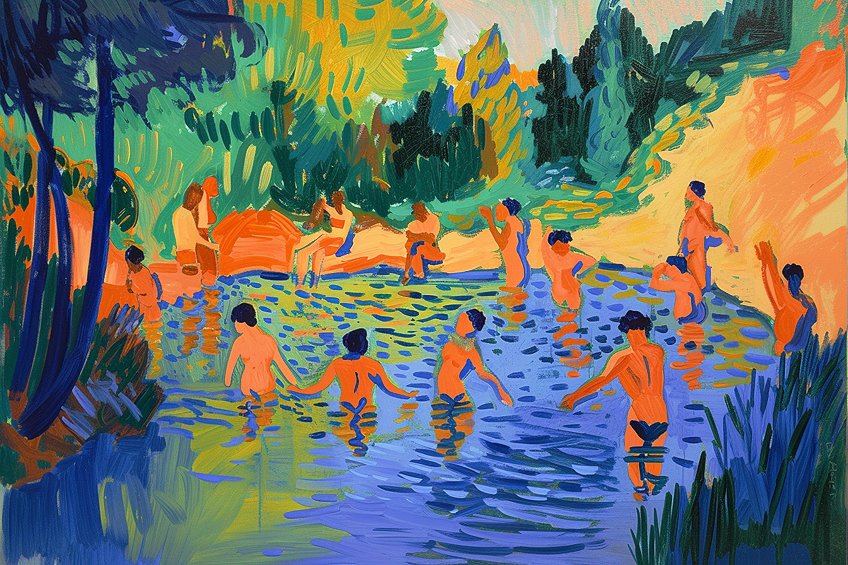
The Bathers follows a Cubist technique that uses cold and warm-toned monochrome colors to allude to a sense of volume in the landscape. His departure from the traditional perspective can also be seen in his treatment of the figures with the loss of a three-dimensional perspective. While we have not touched on all the significant Fauvist works of André Derain, you can explore some of his other well-known works such as The Dance (1905 – 1906) and Turning Road, (L’Estaque) (1905).
André Derain’s paintings reflect his ongoing search for independence from prominent Modern art movements of his era, which was aided by his willingness to experiment with different styles. Although his controversial experience with Nazi Germany left his career and finances on shaky ground toward the end of his life, his work continues to be celebrated by avid fans of Fauvism.
Frequently Asked Questions
Who Was André Derain?
French painter and sculptor André Derain was a renowned 20th-century artist who founded the Fauvism movement and style alongside his contemporary, Henri Matisse. Derain’s practice explored landscapes, portraits, and still-life subjects while experimenting with non-representational color.
What Was André Derain Most Famous For?
Famous Fauvist painter André Derain was renowned for his contributions to Modern art in the 20th century through the development of Fauvism, which incorporated Cubist styles. Derain’s painting style was shaped by a wide range of sources, including African sculpture, French landscape painting, Classicism, the decorative and applied arts, and imagery from the Renaissance and Romanesque eras.
Why Did André Derain Lose Supporters?
André Derain lost supporters in his late career due to his presence and acceptance of an invitation to attend an exhibition in Nazi Germany. His art became a weapon for Nazi propaganda and Derain was ostracized from French circles. His reputation suffered significantly but still survived the controversy since his earlier contributions made him globally renowned. André Derain maintained his stance of non-involvement with Nazi activities.
Who Was André Derain Influenced By?
Fauvism leader André Derain was influenced by the work of Vincent van Gogh, Paul Cézanne, and Pablo Picasso. He also drew inspiration from non-European sculpture, African mask designs, and natural landscapes.
Jordan Anthony is a film photographer, curator, and arts writer based in Cape Town, South Africa. Anthony schooled in Durban and graduated from the University of the Witwatersrand, Johannesburg, with a Bachelor of Art in Fine Arts. During her studies, she explored additional electives in archaeology and psychology, while focusing on themes such as healing, identity, dreams, and intuitive creation in her Contemporary art practice. She has since worked and collaborated with various professionals in the local art industry, including the KZNSA Gallery in Durban (with Strauss & Co.), Turbine Art Fair (via overheard in the gallery), and the Wits Art Museum.
Anthony’s interests include subjects and themes related to philosophy, memory, and esotericism. Her personal photography archive traces her exploration of film through abstract manipulations of color, portraiture, candid photography, and urban landscapes. Her favorite art movements include Surrealism and Fluxus, as well as art produced by ancient civilizations. Anthony’s earliest encounters with art began in childhood with a book on Salvador Dalí and imagery from old recipe books, medical books, and religious literature. She also enjoys the allure of found objects, brown noise, and constellations.
Learn more about Jordan Anthony and the Art in Context Team.
Cite this Article
Jordan, Anthony, “André Derain – Pioneer of Fauvism and Modern Art.” Art in Context. January 25, 2024. URL: https://artincontext.org/andre-derain/
Anthony, J. (2024, 25 January). André Derain – Pioneer of Fauvism and Modern Art. Art in Context. https://artincontext.org/andre-derain/
Anthony, Jordan. “André Derain – Pioneer of Fauvism and Modern Art.” Art in Context, January 25, 2024. https://artincontext.org/andre-derain/.


